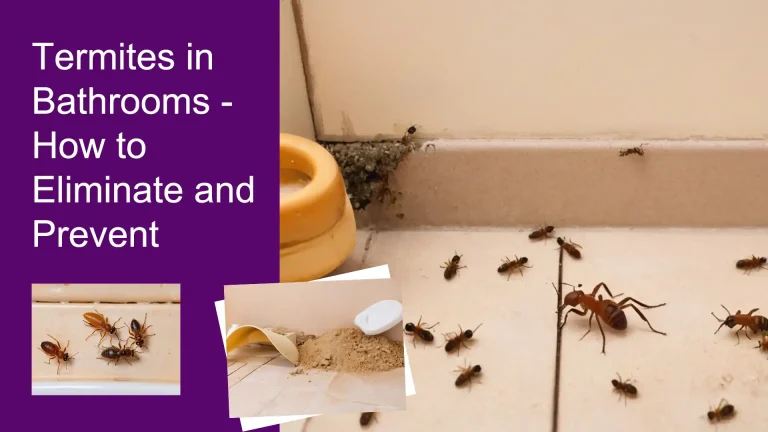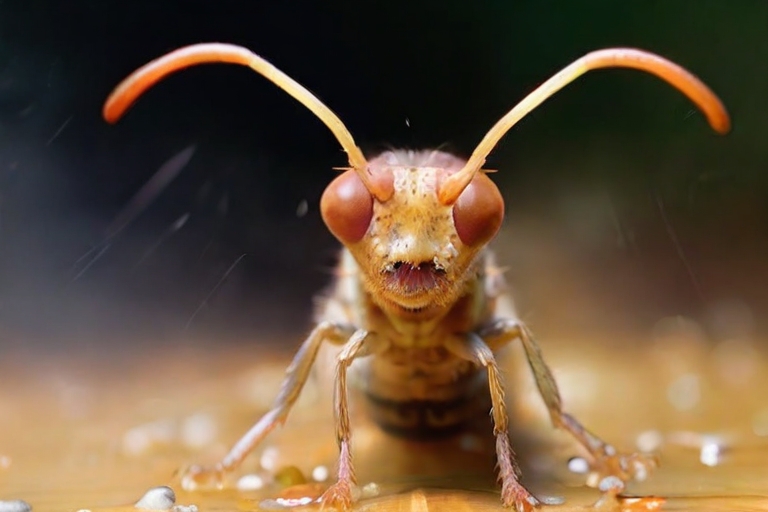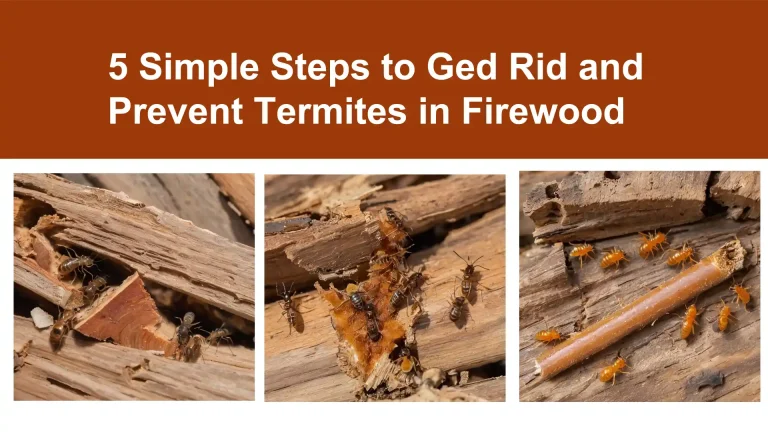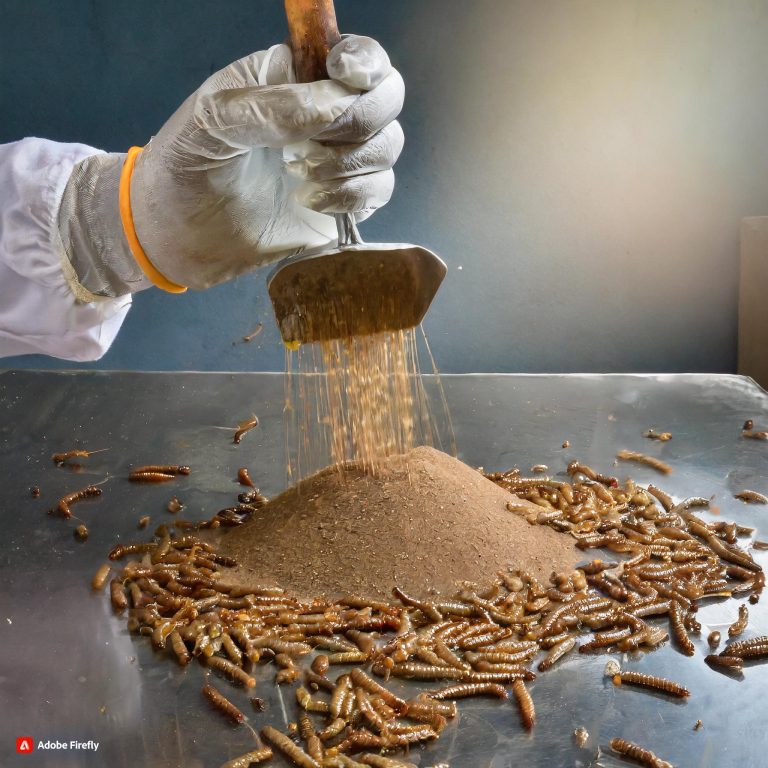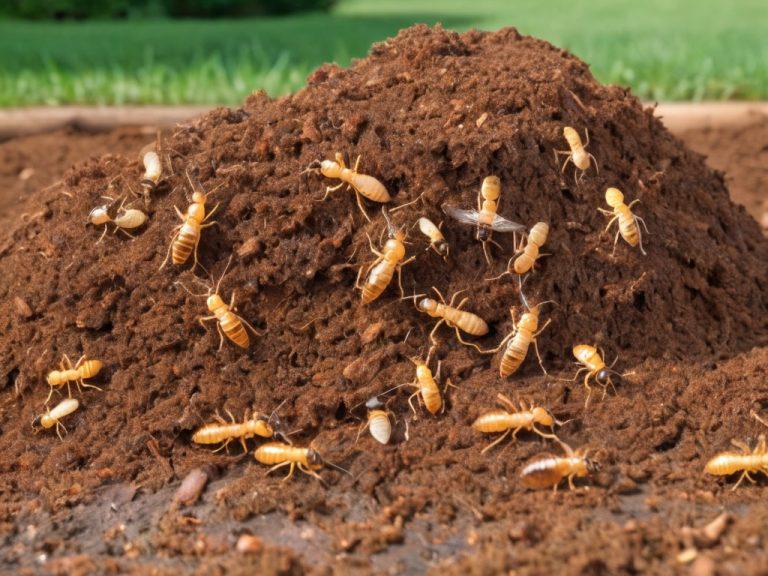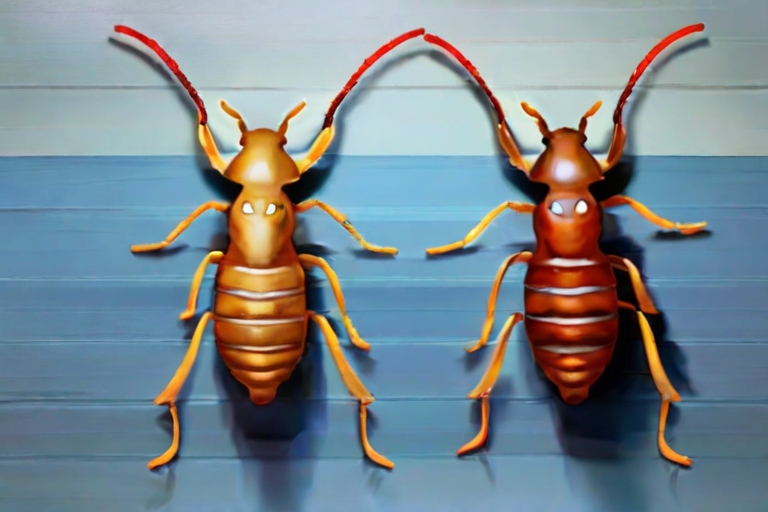Termites in Bed: Can Termites Get in Your Bed?

- Signs Termites Have Infested Your Bed
- Do Bed Termites Bite Humans?
- Can Termites Live in Mattresses?
- Do Termites Eat Mattresses?
- Signs of Termites in Different Areas of Beds
- What Attracts Termites Into Beds?
- How to Stop Termites from Infesting Your Bed
- Killing and Removing Termites from Your Bed
- Preventing Termites from Coming Back
- Conclusion
Finding termites in your bed can be an unsettling and worrying experience. These invasive pests can cause damage to your mattress, bed frame, and other bedroom furniture if left unchecked. But can termites really infest your bed and live in your mattresses?
Unfortunately, the answer is yes. Termites love to feed on cellulose material which is found in abundance in mattresses, bed sheets, wood bed frames, and other natural fiber products used in the bedroom. Their ability to chew through these materials allows them to hollow out spaces to create nesting areas deep inside your bed or bedding.
Understanding the signs of a termite problem and how to prevent infestations is key to keeping these destructive insects out of your sleeping space. This guide covers everything you need to know about termites getting in your bed, how to stop them, and what to do if you already have an infestation.
Signs Termites Have Infested Your Bed
Catching a termite infestation early makes getting rid of them much easier. But it can be tricky to identify an established colony since termites do most of their damage unseen within the material they are infesting.
Here are the most common signs of termites in your bed:
- Tiny piles of wood debris, known as frass, appearing near bed legs or edges of the mattress
- Sawdust-like material mixed in bed sheets or pillow cases
- Termite droppings along mattress seams or bed frame joints
- Cracks or holes in the bed frame with dirt tunnels leading into deeper openings
- Soft spots or sunken pockets on the surface of the mattress
- Seeing live crawling termites in the bed frame or coming out of the mattress
- Buzzing noises coming from inside the mattress or bed base
Catching an infestation within the early stages means you’ll have an easier time removing them and protecting the rest of your home. But if termites are left to freely feast, they can cause significant structural damage over time.
Do Bed Termites Bite Humans?
A common question many people have when finding termites in bedroom areas is whether or not they bite humans. Thankfully, termites do NOT bite or feed on the dead skin cells and oils produced by people sleeping in infested beds.
Termites mainly feed on cellulose sources like wood, paper, natural cotton fibers, etc. Sometimes they mistakenly chew on similar-feeling materials that don’t offer them nutrition. But otherwise, they focus solely on munching through wood-based products.
So although having termites swarming or crawling on your bed can be incredibly unnerving, they do not directly harm your health or skin while you’re sleeping. Their damage is limited only to the physical structure of infested furniture or dwellings.
Can Termites Live in Mattresses?
The materials used inside most mattresses offer the perfect smorgasbord for hungry termites. With ample cellulose sources to feed on, termites can and do live inside mattresses when they become infested. This also creates added concerns beyond just property damage from the pests tunneling through.
Many people logically worry about health issues from having termites making homes inside mattresses. While they don’t directly cause harm or transmit diseases, old fecal droppings and decaying termite corpses can trigger allergies or asthma symptoms in some individuals.
Replacing an infested mattress is highly recommended. Once termites have infiltrated past the outer cover, there are often extensive tunnels throughout inner layers that are difficult or impossible to fully penetrate with treatments.
Trying to salvage a mattress already invaded with insects also leaves the risk of missing eggs or developing nymphs hidden within. These can restart colonies even after removing visible termites. Getting a new bed free of insects is the best approach after discovering an internal mattress infestation.
Do Termites Eat Mattresses?
As mattresses contain a number of nutritious cellulose-based components, termites readily feed on many areas inside them. This includes inner wood framing, insulators, fillers, cushioning layers, fabric covers, and more.
Once inside, established termite colonies voraciously devour any material they can sink their jaws into. The extent of damage varies based on the mattress components available and how rapidly the infestation spreads.
Without treatment, a serious infestation over months or years will likely render a mattress unusable. Inner support layers will become severely compromised as the termites eat away. External cover layers also become increasingly prone to failure as insects munch through stitches or backing materials.
Catching mattress invasions early is key to preserving their longevity and stopping costly replacement. But even with quick action, there is no guarantee termites haven’t already spread extensively past areas visible or reachable through external treatment.
Completely clearing termites from mattresses is difficult, requiring extensive dismantling to access inner layers. This combined with the health concerns of old infestations means replacement is usually the smartest option after discovering a termite invasion in your mattress.
Signs of Termites in Different Areas of Beds
Termites can find their way into a number of areas and components that make up beds. Since bed frames provide abundant wood material to munch through, this is often one of the first sections targeted when termites invade bedrooms.
Over time, nesting colonies expand past initial entry points to infiltrate other neighboring cellulose food sources. Mattresses become vulnerable to invasion as termites discover and break through outer cover layers. From there they can feast on internal fibers,fillers, and wooden supports.
Knowing the signs of termites and where to look for early stage invasions is key to getting on top of infestations before major damage occurs. Here are common signs of termites when they infest specific bed areas:
Termites in Bed Legs & Frames
- Small holes chewed through unfinished wood elements
- Hollowed out sections in wood legs or boards
- Frass pellets around leg joints or corners
- Mud tunnels extending up bed frame from the floor
- Weakened joints causing loosening of connectors
Termites in Headboards & Footboards
- Holes chewed through back boards and edging
- Sagging or softened wood sections on carved ornamentation
- Paint flaking off from damaged wood underneath
- Frass dust collecting in corners or crevices
Termites Inside Mattresses
- Fine sawdust material within mattress covers
- Small pinholes chewed through fabric layers
- Sagging sections as internal support is eaten
- Live termites crawling out of mattress seams
Checking all areas of your bed helps identify the start of new invasions before expansive nesting colonies develop inside. Catching infestations when they are smaller allows faster removal and prevention of additional damage.
What Attracts Termites Into Beds?
Termites are always on the search for cellulose material to feed their voracious appetites. Beds contain no shortage of wood elements, fabric coverings and stuffing fillers for termites to feast on.
Several factors can make beds extra enticing for beginning nests and full-blown colonies:
- Untreated Wood Components – Bed frames, legs, headboards with unfinished wood offer easy starting points for termites to chew into. Sealing exposed wood makes it less palatable.
- Direct Contact With Floors/Walls – Bed legs/runners allowing hidden tunnels up into frames from termite tubes in walls or flooring above soil.
- Nearby Water Sources – Leaks, flooding, or condensation allowing moisture into nearby crevices that termites need for nests.
- Less Frequent Disturbance – Out of sight areas under box springs rarely moved for cleaning provide secluded and stable environments suitable for establishing termite colonies.
Following proactive prevention steps makes beds far less attractive targets for new termite intrusions. Ensuring wood components stay dry and sealing any exterior cracks limits chances of discovery by foraging termites. Catching early signs like wandering scout insects also allows treatment before destructive colonies take hold.
How to Stop Termites from Infesting Your Bed
Preventing termites from gaining a foothold in your bed or bedroom requires diligence and dedicated prevention methods. Stopping an infestation in the early stages as wandering scouts search for entry is more successful than trying to clear out an expansive colony down the road.
Follow these key steps to keep termites away from your beds and halt new invasions before they become established:
Inspect Regularly for Early Signs
- Check all bed legs, frames, and headboards for small holes, cracks, or tunnels – Early signs termites are scouting for ways inside wood elements.
- Monitor mattress edges carefully for pinholes in fabric or fibers accumulating inside – This signals termites reached inner layers to feed and nest.
- Keep vigilant watch for signs like frass dust or termite droppings around bed frames.
Address Any Moisture Concerns Quickly
- Repair leaky plumbing, roofs, windows that allow excess moisture – Termites need humidity to thrive.
- Move beds away from exterior walls, tree roots, moist soil – These attract termites toward your bedrooms.
- Install vapor barrier protection behind headboards on exterior walls.
Isolate and Seal Vulnerable Areas
- Ensure bed frames, legs & headboards don’t touch walls, flooring – Limits hidden access inside framing.
- Seal any cracks, crevices, unfinished wood elements – Harder for termites to penetrate protected barriers.
- Place bed posts/legs in moats of diatomaceous earth or copper mesh – Prevents ground tunnels from reaching wood supports above.
Following dedicated prevention protocols makes your bed an increasingly difficult target for new termite infiltrations over time. But occasional signs like seeing stray insects means quick intervention with localized treatments before infestations spiral out of control.
Killing and Removing Termites from Your Bed
If termites do successfully establish nests and colonies within your bed, taking swift action is necessary to get rid of termites infestation before major structural damage spreads. Treatment difficulty varies based on the stage of invasion and how deeply embedded termites have become.
Destroying Early Stage Invasions
Catching stray scout termites or very limited nesting activity allows easier removal before expansive colonies take over larger areas of a bed. Some effective treatment options include:
- Spot treatment sprays directly into shallow chew holes or tunnels
- Light surface dustings of diatomaceous earth around legs/frames
- Baited traps containing termicide applied to scout entry areas
- Contained heat/steam treatments for killing scout insects and eggs on contact
Successfully wiping out the few advance members of a termite colony stops additional numbers from following their pheromone trails into your bed frame and surrounding furniture. But termites are crafty at discovering multiple access points, making full perimeter treatment necessary to cover off other routes.
Eliminating Established Colonies
For more entrenched populations with clearer signs like frass dust, swarms, or extensive damage, more aggressive removal is required:
- Tenting Fumigation – Sealing infested beds for full enclosure gassing allows chemicals to fully penetrate deep nesting areas.
- Nitrogen/CO2 Injections – Diffusing these gases through affected wood also clears embedded colonies and is less messy than liquids. But reinfestation sometimes still occurs over time.
- Extreme Temp Treatments – Heating/freezing bed components penetrates inside wood better than spraying to kill all life stages.
- Whole Bed or Furniture Replacement – Most effective (but costly) method once termites have free reign inside mattresses, frames, headboards. Allows starting fresh bug-free.
Most infestations warrant calling professional pest control services to access specialized treatment equipment and commercial-grade insecticides home remedies can’t match. This gives the best chance of permanently clearing heavily entrenched termite colonies from your bedrooms.
Preventing Termites from Coming Back
Eliminating one termite infestation doesn’t mean you did termite control. Without diligent prevention methods, new colonies often follow previous activity back into beds and furniture – sometimes only months later.
That’s because bed frames, legs and headboards make very welcoming environments for termites to establish protected nests. Stopping the cycle of repeat infiltration requires strict preventative regimens.
Keep Beds Completely Free of Wood Contact
Eliminate any physical touching of floors, walls or objects termites use as “bridges” to cross unseen onto bed frames. Check for points of contact monthly. Insert small spacers or floor protectors if needed to isolate completely.
Maintain a Protective Gap
Ensure at least a 6 inch (15 cm) gap remains between all sides of the bed frame with any nearby walls, furniture legs, baseboards, and the floor. This creates an obstruction for termites to have to fully expose themselves when trying to cross.
Arrange Bed Legs in Moats
Place each leg of a bed frame centered within a small plastic dish recess filled with diatomaceous earth, copper mesh or similar defensive barrier material. Check moats monthly to ensure termites can’t bridge across gaps through contact points at the bed frame above.
Conduct Routine Inspections
Visually check your bed and mattress completely at least quarterly. Peer underneath the frame and run hands thoroughly along inside crevices feeling for holes, cracks or signs of new termite activity. Catching early warning signs allows preventative spot treatments to keep growth contained.
Conclusion
Dealing with a termite infestation in your bed can be stressful and costly if the invasion spreads unchecked. But being vigilant for early warning signs allows rapid response to keep damage limited. Investing in prevention also restricts future colonies from re-establishing once existing termites have been eliminated.
While not a direct health hazard, permitting termites prolonged access to feast inside your mattresses or furniture can create costly outcomes. Taking proactive precautions provides peace of mind your bed will remain pest-free for restful nights ahead.
Key Takeaways
- Monitor bed frames/mattresses routinely for early signs like new holes or wood debris
- Address moisture sources quickly that allow termites to thrive
- Isolate beds from contact with potential termite entry points
- Treat early discoveries of scout termites rapidly before colonies multiply
- Follow strict prevention protocols to avoid repeat termite infiltrations after eliminating infestations

